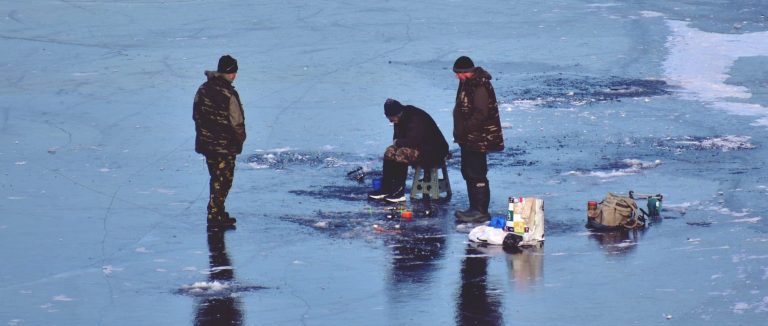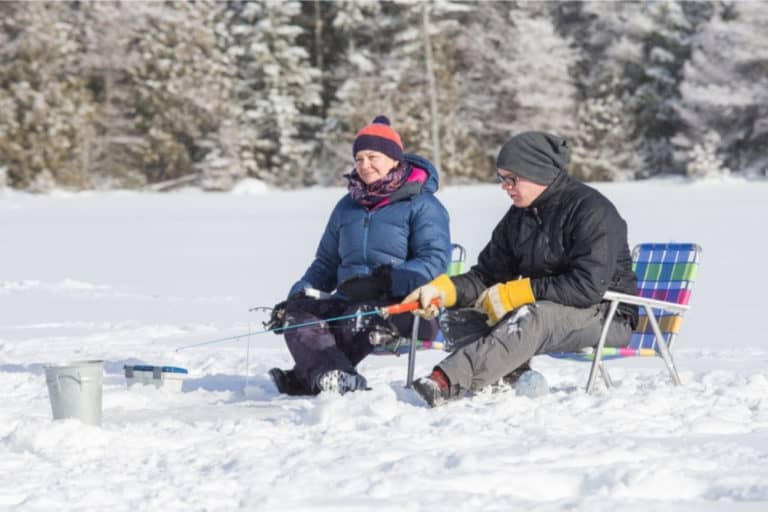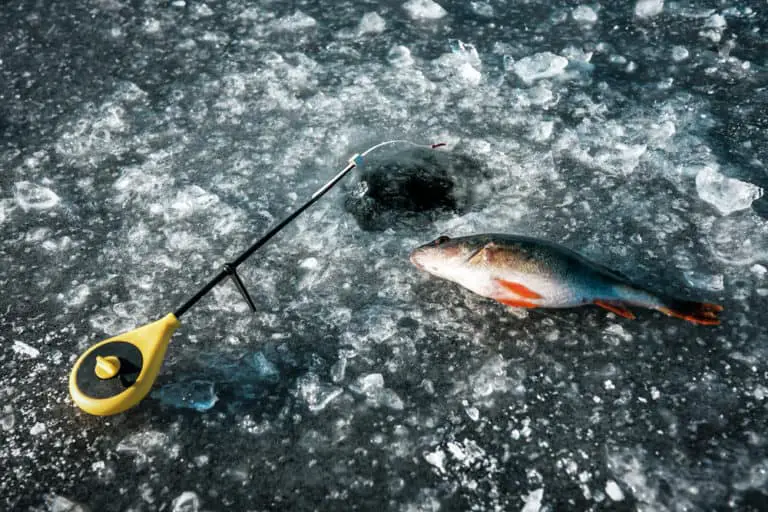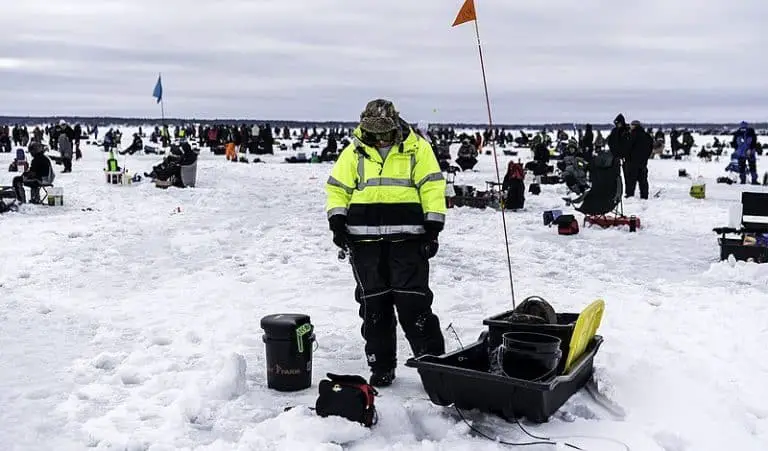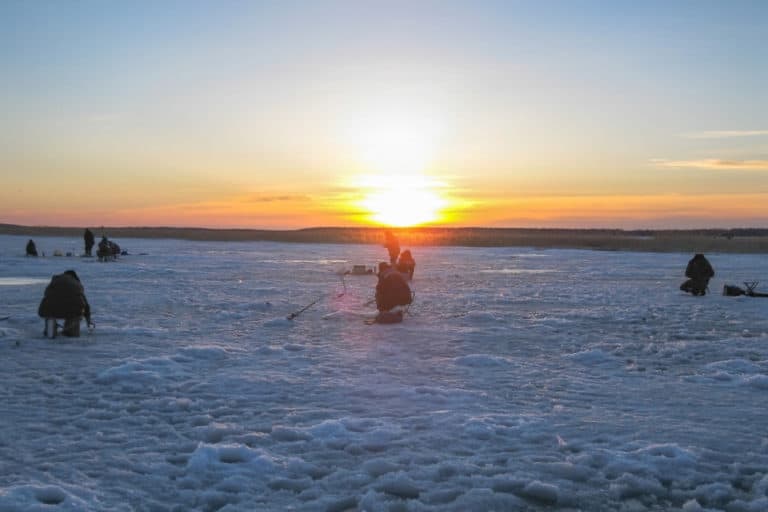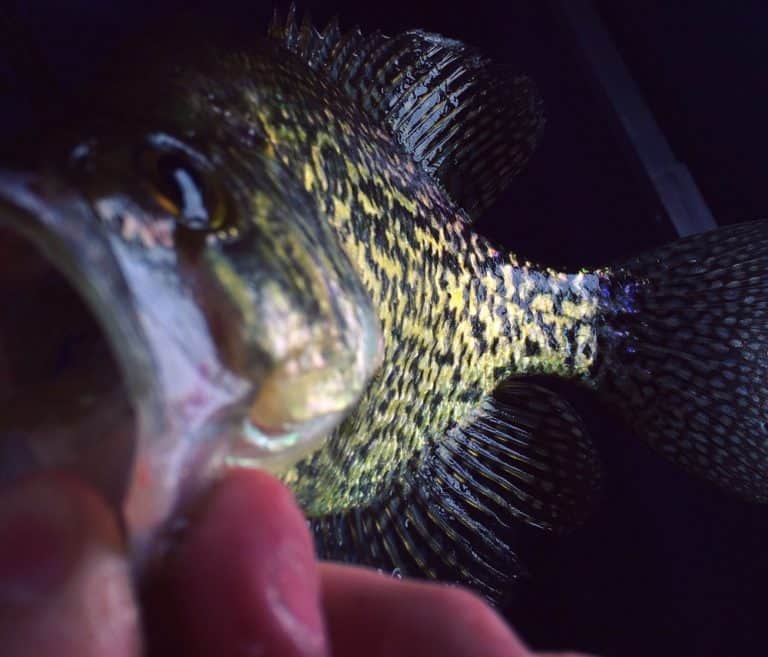How Deep To Lower Your Line When Ice Fishing
If you are interested in angling, then you may be thinking about ice fishing. Ice fishing can be very exciting and rewarding, but you have to be aware of the proper measures to take, and how deep to lower your line when ice fishing if you want to be successful!
Luckily, we are here to help, and give you some tips and guidance on ice fishing. One of the main questions that avid fishing enthusiasts will ask themselves when ice fishing is how deep to lower the line for the best results.
Whilst there are some general recommendations that we can give you, how deep you lower your line when ice fishing will depend on what kinds of fish you want to catch.
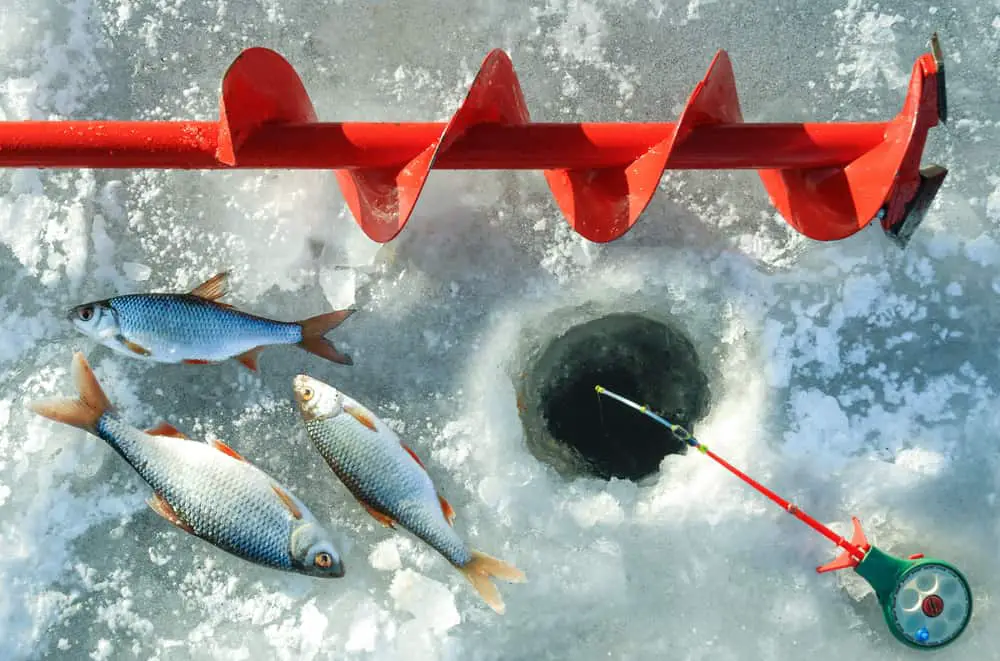
That being said, most fish will linger near the bottom of the body of water during the winter months, but there can be some exceptions, and they may swim in the shallow waters, making them easier to see, and catch.
So, how deep should you be lowering your line when ice fishing?
Table of Contents
How deep to lower your line when ice fishing
Generally speaking, it is recommended that you have your bait lowered within 3 to 4 feet off the bottom of the lake when you are ice fishing. You will also need to ensure that you have a brightly colored or silver lure, as this can help the fish see the bait and become drawn towards it.
However, you can catch fish at various depths, and you are not just restricted to using this depth for your line when ice fishing.
Sometimes, things can be rather slow at the bottom, and you may notice that the fish are rising to the surface, particularly when it gets darker as nighttime approaches. Some fish will choose this time to find prey, and can be at different depths, and not so close to the bottom of the lake.
Therefore, you can try lowering your line to the bottom of the lake, but you may not be successful. Why not try ice fishing at middle depths, or near the surface?
You will not need much line, and you can often get lots of action in the middle zones of the lake. At the surface of the lake, you can often find species such as salmon,
How do you set depth for ice fishing?
The best piece of advice we can give you is to never stick to one depth. Yes, it is best to start with the bottom of the lake, at depths of 20 feet or more, but some days this can be unsuccessful.
Depending on the month, time, location and environment, the fish can move around a lot.
We recommend starting from the bottom, seeing how you go and working your way up. Start with just a few feet off the bottom, then fish in the middle section to see how you get on, at about 10 feet deep, and then try the shallows from about 2-8 feet deep.
What is the ideal depth for ice fishing?
If you are fishing on a clear lake, then the best depth is usually within the 10 foot -20 foot range. However, this does depend on the fish movement, as some can move towards the shallows in depths of 2 to 4 feet as the night draws in in order to feed.
How far off the bottom do you ice fish?
For ice fishing, we would recommend that you fish about 3 to 4 feet from the bottom of the lake. Sometimes, in the bottom of the lake, the most fish will be active, and so having your line in this position and depth can be the most successful.
Ice fishing tips
One of the great things about ice fishing is that you are not limited to where you can go on the lake. Normally, a boat can only take you to certain places, but on foot on a frozen lake, you are able to find your prime location for ice fishing.
So, why not try heading out into the exact middle of the lake, and drop your line all the way to the bottom of the lake? This is where you will likely find most of the fish in the lake.
However, in some lakes, the bottom can be more than 100 feet deep. Therefore, you will need a lot of fishing line to do this, so make sure that you are prepared for anything!
You can also estimate this before heading out onto the lake by using a topographical map. Then, you will know what equipment you will need.
For instance, if you are using a fishing rod, you will need at least 100 yards on the reel, and at least 100 feet of braided line if you are using tip ups.
Another tip we can give you is to let your jig rest just close enough at the bottom. It should be barely resting on the bottom, and you can use a spring bobber to help you catch curious fish. Then, it will pop up when the fish takes the bait.
Other ice fishing enthusiasts swear by letting your jig bounce off the floor of the lake, but be careful not to damage it.
Baiting fish in this way is useful as it will create a cloud of dirt and debris in the water that will attract fish to investigate it, and look for food. Then, they may not notice the bait, and you can catch them.
If you really want to find some fish, then you will have to be adaptable, and prepared. Try a few different depths for ice fishing, as fish can change location depending on many factors such as the time of year, time of day and what the weather is like.

